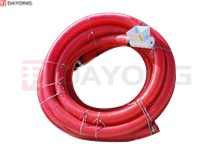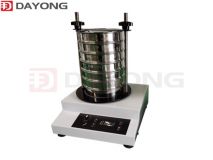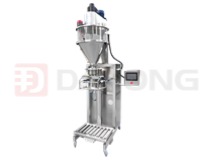DAYONG Vibrating Screen in additive manufacturing industry
Type of additive manufacturing
Historically, the manufacturing process has always used material reduction processes, such as molds, cutting and drilling. These processes are considered a waste because there is excess material not used throughout the processing.
As the name implies, additive manufacturing provides another more cost-effective production process, reducing material waste. Additive manufacturing technologies have a wide range of advantages and disadvantages:
Adhesive spray molding technology - one of the most common additive manufacturing technologies, which mainly uses adhesives to bond powder materials layer by layer. This technology is more convenient than other processes, but because the materials are bonded together, it may not be applicable to structural members.
Powder bed fusion technology (PBF) - This technology uses a laser or an electron beam to melt and fuse materials together. This process is applicable to all kinds of materials, including titanium, aluminum and stainless steel. It is an ideal choice for structural parts, but the processing speed is usually slow.
Electron Beam Melt Molding - This technology uses focused heat energy to melt and fuse materials as they are deposited. The materials used are usually powder or wire like metals, such as titanium, aluminum, stainless steel or copper, and the raw materials will be deposited on the surface through the nozzle. This technology is very suitable for repairing or adding parts to existing artifacts.
Material extrusion - raw materials are extruded by nozzle after being heated, and then deposited layer by layer. As the material is in a molten state, each layer will naturally blend into the previous layer to enable continuous printing. This provides good flexibility for design and can achieve higher accuracy.
Due to the fully enclosed design of the universal vibrating screen, compared with the manual screen, it will not produce a lot of dust when recycling 3D printing powder and cleaning parts. In addition, the vibrating screen has low noise during operation and hardly requires maintenance. This is a huge process improvement, providing a safer production environment for equipment operators.
Advantages and characteristics of DAYONG vibrating screen:
Increase production capacity - more raw materials can be processed
Automate labor-intensive processes - avoid manual screening and save labor costs
The operation process is cleaner and safer - less dust compared with manual screening





 (Live chat)
(Live chat)

_213x160.jpg)



 +86-373-3669005
+86-373-3669005 laura@vibratingscreen.cc
laura@vibratingscreen.cc +86-373-3669006
+86-373-3669006 From West Room 5, 1st Floor, Building 18, Huilong Yangguang Mingyuan, New District, Xinxiang, Henan, China (Mainland).
From West Room 5, 1st Floor, Building 18, Huilong Yangguang Mingyuan, New District, Xinxiang, Henan, China (Mainland). Your Position:
Your Position:


